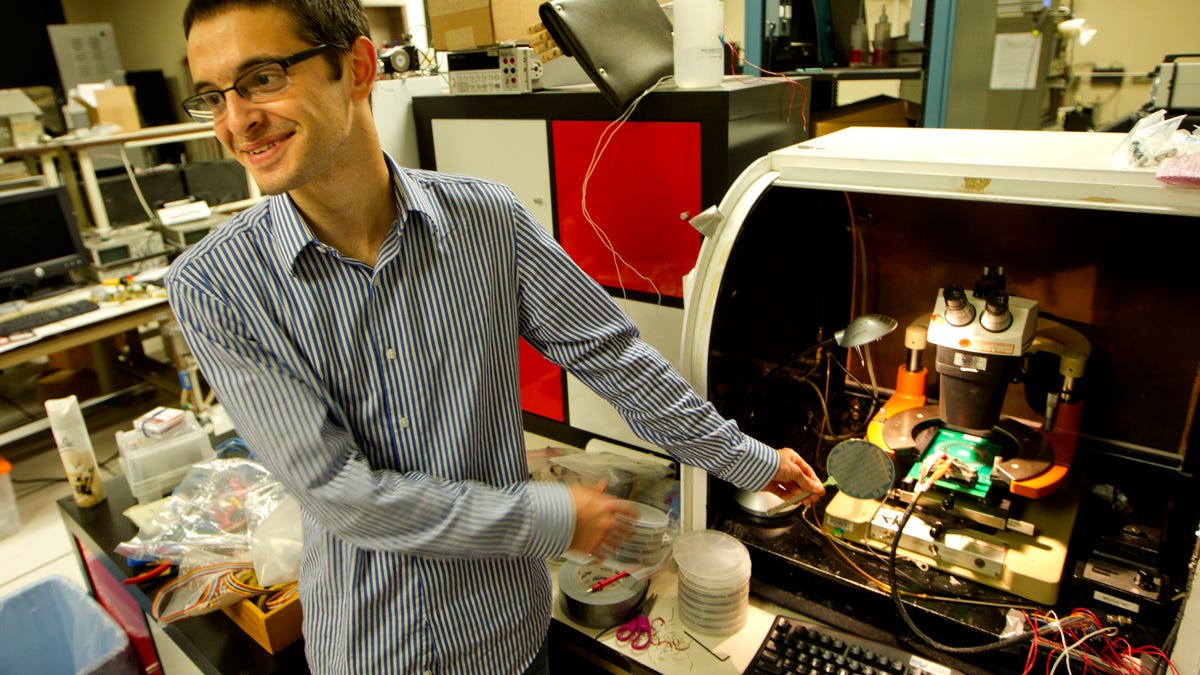First carbon nanotube computer to help extend Moore's Law?
Stanford researchers have created a basic system that shuns silicon in favor of imperfect lines of carbon atoms that could one day deliver even more performance and efficiency than current technology.

Silicon Valley may soon require a name change to avoid the risk of sounding like a relic from a generation of bygone tech, thanks to new computer system created -- where else -- in Silicon Valley.
A cover story for the journal Nature, out Wednesday, details the efforts of a team based at Stanford to create the first basic computer built around carbon nanotubes rather than silicon chips.
"People have been talking about a new era of carbon nanotube electronics moving beyond silicon," Stanford professor Subhasish Mitra said in a release from the university. "But there have been few demonstrations of complete digital systems using this exciting technology. Here is the proof."
If you're the type of user who's much more concerned with what your computer or device can do rather than how it does it or what type of semiconductor material inside is making the magic happen, here's the skinny on why you should pay attention to the nerdy details at least this once.
For decades now, the exponential acceleration of technology -- which has taken us from room-size computers run by punched paper cards to insanely more powerful devices in our pockets -- has depended on shrinking silicon transistors to jam ever more onto a chip.
The result of this miniaturizing march has been devices that are becoming ever smaller, more powerful, and cheaper. In fact, transistor density has doubled pretty reliably about every 18 months or so since the dawn of the information age -- you might know this as "Moore's Law."
But many think silicon's long run as the king of computing could be nearing an end. That's because continually jamming more tiny transistors on a chip has become more difficult, expensive, and inefficient, not to mention the inevitable physical limitations -- you can't keep shrinking transistors forever.
Carbon nanotubes -- long chains of carbon atoms thousands of times thinner than a human hair -- have the potential to be more energy-efficient and "take us at least an order of magnitude in performance beyond where you can project silicon could take us," according to H.S. Philip Wong, another member of the Stanford team.
Problem is, carbon nanotubes aren't perfect either. They don't always grow in perfectly straight lines, and a fraction of the tubes grown aren't able to "switch off" like a regular transistor.
The Stanford team used a technique of "burning" off some of the imperfect carbon nanotubes while also working their way around other imperfections by using a complex algorithm. The final design consists of a very basic computer with 178 transistors that can do tasks like counting and number sorting and switch between functions.
The computer's limited power is due in part to the facilities available to the team, which did not have access to industrial fabrication tools.
So what we have now is basically a proof of concept for the first carbon nanotube computer, which is about as powerful as Intel's 4004, the first single-chip silicon microprocessor released in 1971. But if this technology turns out to be a worthy successor, we'll likely see devices that can not only compete with, but greatly exceed, the potential of silicon systems.
More importantly, it could mean that Moore's Law will continue for at least a little while longer.
Today, a carbon nanotube computer that can count its own transistors; tomorrow, perhaps the power of a human brain captured in strands thinner than a human hair.

